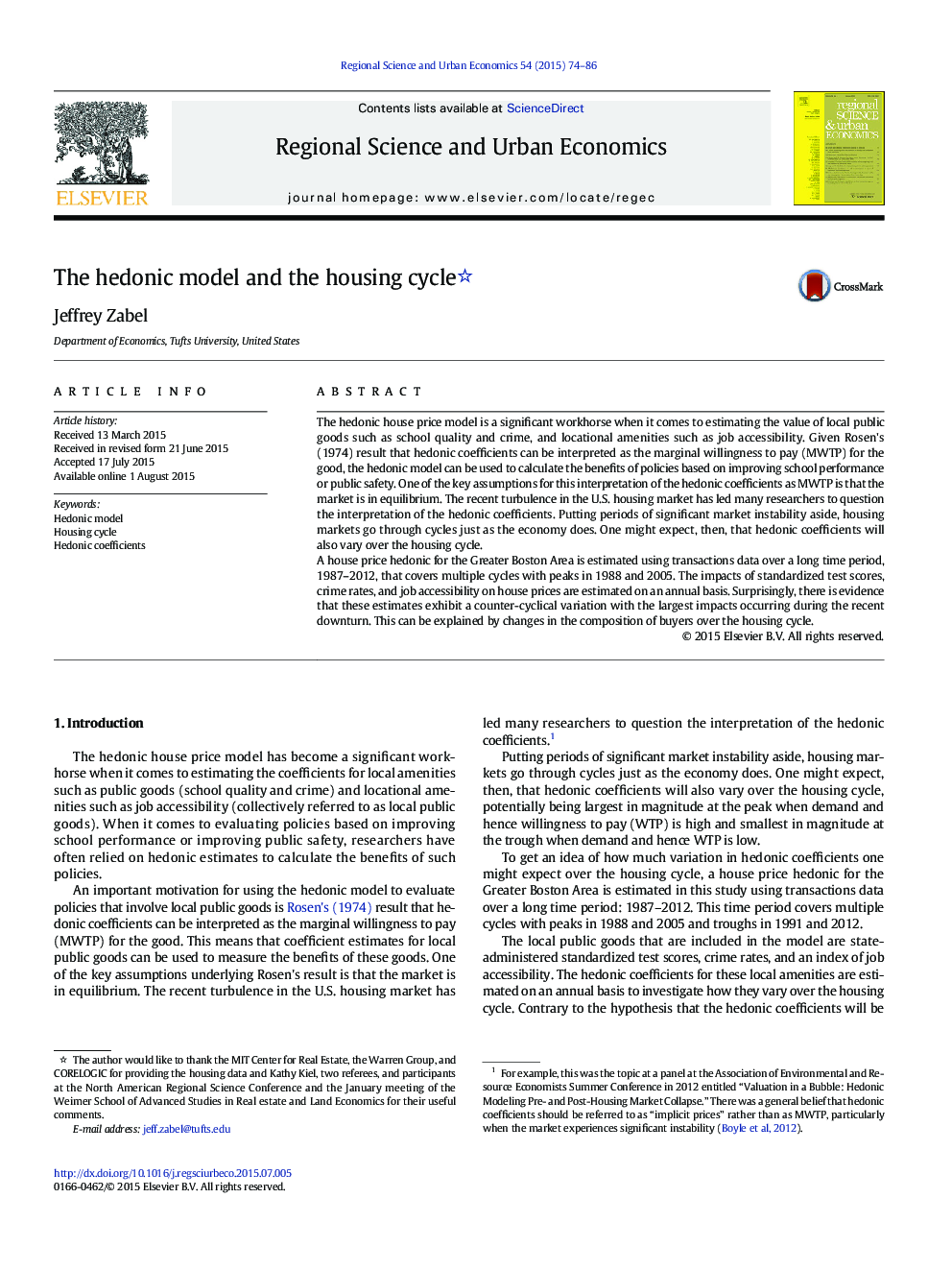| کد مقاله | کد نشریه | سال انتشار | مقاله انگلیسی | نسخه تمام متن |
|---|---|---|---|---|
| 983126 | 1480540 | 2015 | 13 صفحه PDF | دانلود رایگان |

• A house price hedonic for the Greater Boston Area is estimated using data over a long time period, 1987-2012, that covers multiple housing cycles.
• The impacts of local public goods on house prices are estimated on an annual basis and using a full housing cycle.
• Surprisingly, there is evidence that these estimates exhibit a counter-cyclical variation.
• The recommendation for policymakers is to base hedonic estimates for local public goods on data that cover a full housing cycle.
The hedonic house price model is a significant workhorse when it comes to estimating the value of local public goods such as school quality and crime, and locational amenities such as job accessibility. Given Rosen's (1974) result that hedonic coefficients can be interpreted as the marginal willingness to pay (MWTP) for the good, the hedonic model can be used to calculate the benefits of policies based on improving school performance or public safety. One of the key assumptions for this interpretation of the hedonic coefficients as MWTP is that the market is in equilibrium. The recent turbulence in the U.S. housing market has led many researchers to question the interpretation of the hedonic coefficients. Putting periods of significant market instability aside, housing markets go through cycles just as the economy does. One might expect, then, that hedonic coefficients will also vary over the housing cycle.A house price hedonic for the Greater Boston Area is estimated using transactions data over a long time period, 1987–2012, that covers multiple cycles with peaks in 1988 and 2005. The impacts of standardized test scores, crime rates, and job accessibility on house prices are estimated on an annual basis. Surprisingly, there is evidence that these estimates exhibit a counter-cyclical variation with the largest impacts occurring during the recent downturn. This can be explained by changes in the composition of buyers over the housing cycle.
Journal: Regional Science and Urban Economics - Volume 54, September 2015, Pages 74–86